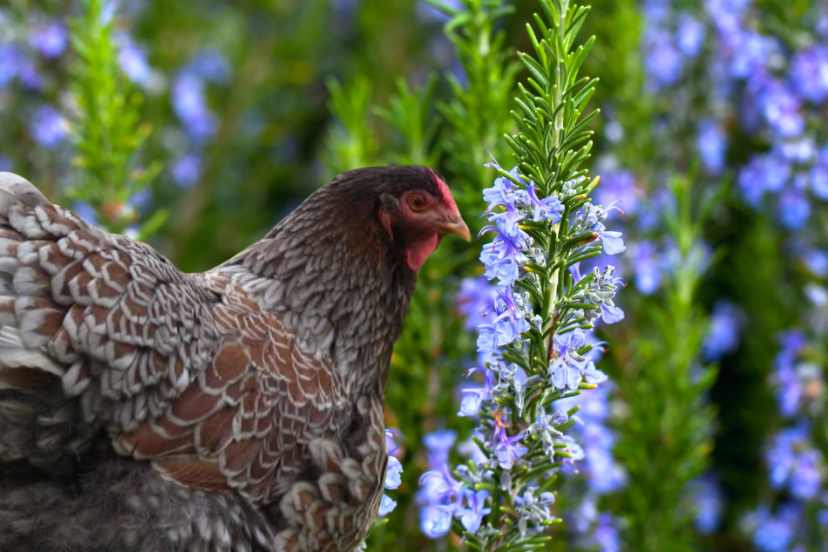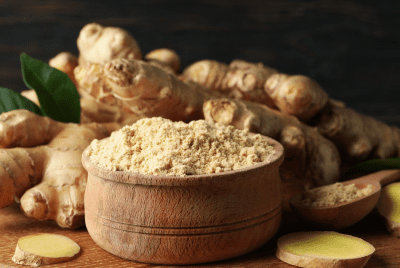Rosemary a Pest Repellent of Grandeur
Over the centuries, rosemary has been celebrated not just for its culinary uses, but also for its remarkable properties as a pest repellent of grandeur. This fragrant herb, with its distinctive aroma, has proven to be an effective deterrent against a wide range of pests that can wreak havoc on homes and gardens.
Whether you are looking to keep mosquitoes at bay, ward off ants, or deter moths from invading your closets, rosemary offers a natural and safe alternative to chemical pesticides. Its versatile nature and easy availability make it a popular choice for those seeking environmentally friendly solutions to common pest problems.
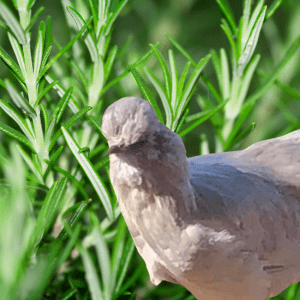
Key Takeaways:
- Effective Pest Repellent: Rosemary is a powerful pest repellent that can deter various insects and pests from gardens and homes.
- Natural and Safe: Using rosemary as a pest repellent is a safe and natural alternative to chemical pesticides, making it environmentally friendly.
- Multiple Uses: Besides repelling pests, rosemary also has medicinal properties, culinary uses, and aromatic benefits.
- Easy to Grow: Rosemary is an easy-to-grow herb that thrives in most climates, making it a low-maintenance yet effective pest control solution.
- Aesthetically Pleasing: In addition to its practical benefits, rosemary plants add beauty and fragrance to gardens, making them a dual-purpose addition to outdoor spaces.
Mix some herbs in with the vegetable treats.
Historical Use of Rosemary
There’s no denying that rosemary has a long and illustrious history when it comes to its use in various cultures. This fragrant herb has been revered for centuries for its aromatic qualities as well as its potential health and pest-repellent benefits.
Traditional Applications of Rosemary
The traditional uses of rosemary go back to ancient times, with the herb being a symbol of remembrance and fidelity in ancient Greece and Rome. It was often used in religious ceremonies, weddings, and funerals, showcasing its significance in these cultures. Additionally, rosemary was used for its culinary purposes, adding flavor to various dishes and drinks.
Rosemary in Folk Medicine and Pest Control
To this day, rosemary continues to be praised for its medicinal properties in folk medicine. It is thought to have antimicrobial, antioxidant, and anti-inflammatory properties, making it a popular remedy for various ailments. In addition to its medicinal uses, rosemary has also been known for its effectiveness in pest control. The strong aroma of rosemary is believed to repel certain pests, making it a natural and chemical-free option for keeping them at bay.
Medicine: In folk medicine practices, rosemary has been used to relieve indigestion, improve memory, and alleviate muscle pain. However, it is important to note that while rosemary can offer health benefits, consuming large amounts of rosemary oil can be toxic and should be avoided without proper guidance.
Botanical Profile of Rosemary
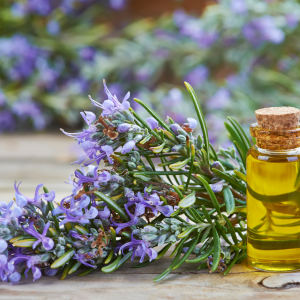
Taxonomy and Species
For those interested in the botanical aspects of plants, Rosemary goes by the scientific name Rosmarinus officinalis. Belonging to the Lamiaceae family, this evergreen perennial herb is native to the Mediterranean region.
Physical Characteristics and Growth Habits
Any gardener or nature enthusiast will appreciate the beauty and resilience of Rosemary. This woody herb typically grows upright, reaching heights of up to 4 feet, with needle-like leaves that are deep green on top and silver underneath. The fragrant leaves are arranged in pairs along the stem, and in the right conditions, Rosemary produces beautiful blue flowers that attract bees and butterflies. It thrives in sunny locations with well-draining soil, making it a popular choice for both garden beds and containers.
Rosemary’s Active Compounds and Mechanisms
Unlike other common pest repellents, rosemary contains several active compounds that make it a powerful natural deterrent. One of the key compounds found in rosemary is camphor, which has strong insecticidal properties. Another important compound is 1,8-cineole, which has been found to repel a variety of pests including mosquitoes, flies, and moths. These compounds work synergistically to create a potent pest-repelling effect.
Essential Oils and Their Properties
Rosemary’s imperative oils are packed with beneficial properties that contribute to its pest-repelling abilities. These oils have a strong scent that deters pests, making it an effective natural alternative to synthetic repellents. In addition, the imperative oils of rosemary have antimicrobial properties, which can help protect plants from diseases spread by pests.
How Rosemary Repels Pests: Scientific Explanation
Active compounds in rosemary, such as camphor and 1,8-cineole, disrupt the nervous systems of pests, causing paralysis and death. These compounds interfere with the insects’ ability to feed and reproduce, making rosemary an effective pest control solution. The strong scent of rosemary imperative oils also confuses pests, making it difficult for them to locate their food sources.
Explanation: Rosemary’s active compounds work together to create a powerful pest-repelling effect by disrupting pests’ nervous systems and feeding habits. This natural solution not only repels pests but also helps protect plants from diseases, making it a grandeur choice for pest control.
Cultivating Rosemary for Pest Deterrence

Not just a delightful addition to your culinary endeavors, rosemary also boasts pest-repellent properties that make it a valuable companion in the garden. Cultivating rosemary for pest deterrence can be a game-changer in your efforts to protect your plants from unwanted visitors.
Best Practices for Growing Rosemary
Growing rosemary successfully involves providing the right environment and care for this aromatic herb. Rosemary thrives in well-drained soil and prefers full sunlight. It is important to ensure that the plant is not overwatered, as this can lead to root rot. Pruning the plant regularly will not only help it maintain its shape but also encourage healthy growth.
Integration into Pest Management Strategies
Strategies for integrating rosemary into your pest management plans can be highly effective in keeping unwanted insects at bay. The strong aroma of rosemary acts as a natural deterrent for pests, making it an excellent choice for companion planting. By strategically placing rosemary near susceptible plants, you can protect them from infestations while enjoying the herb’s many benefits.
Integrating rosemary into your pest management strategies can also contribute to a more sustainable and organic approach to gardening. By harnessing the power of this herb’s pest-repellent properties, you can reduce the need for chemical interventions and promote a healthier ecosystem in your garden.
Utilizing Rosemary in Different Environments
Once again, rosemary proves its worth as a versatile and effective pest repellent, suitable for a variety of environments. Whether you’re looking to protect your home or crops from unwanted intruders, rosemary has the potential to be a powerful ally in your pest control efforts.
Residential Applications of Rosemary Repellents
One of the most common uses of rosemary as a pest repellent is in residential settings. Rosemary can be easily incorporated into home gardens, flower beds, and even as a potted plant indoors to deter insects and rodents. Its strong aroma is known to repel pests such as mosquitoes, flies, and even mice, making it a natural and non-toxic alternative to chemical pesticides.
Agricultural Use and Effects on Crop Pests
On agricultural lands, rosemary can play a crucial role in pest management, offering a sustainable and environmentally friendly solution for farmers. By planting rosemary along the borders of fields or incorporating it into crop rotations, farmers can effectively repel insects and other pests that may damage their crops. Additionally, the presence of rosemary can attract beneficial insects that prey on crop pests, creating a more balanced ecosystem in the agricultural setting.
The imperative oils present in rosemary not only act as a repellent but also have antimicrobial and antifungal properties that can protect crops from diseases. By harnessing the power of rosemary, farmers can reduce their reliance on chemical pesticides, promoting a healthier and more sustainable approach to agriculture.
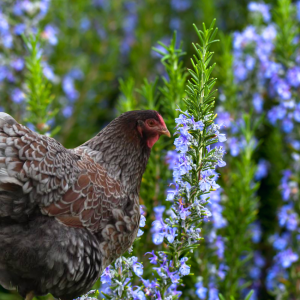
Comparing Rosemary to Other Natural Repellents
Effectiveness in Comparison to Other Herbs
An analysis of Rosemary and its effectiveness in comparison to other herbs as a pest repellent reveals promising results. Studies suggest that Rosemary can be as effective as, if not more effective than, other natural repellents.
Advantages and Limitations of Rosemary in Pest Control
Other than its effectiveness, Rosemary also possesses several advantages in pest control. The advantages include its pleasant aroma, economical use, and versatility in application methods. However, one must consider its limitations before solely relying on it for pest control.
Other natural repellents may also have their unique advantages, such as different scents that repel specific pests effectively. It is crucial to consider these factors while choosing the most suitable method for pest control.
Limitations: While Rosemary is a potent pest repellent, it may not be as effective in controlling all types of pests. Additionally, its longevity as a repellent might vary based on environmental factors, making consistent pest control challenging.

Preparing and Using Rosemary-Based Repellents
Many gardeners and homeowners are turning to natural methods to keep pests at bay. Rosemary, with its fragrant leaves and excellent pest-repelling properties, is a popular choice for creating homemade repellents. Not only is rosemary effective in keeping pests like mosquitoes, flies, and moths away, but it also adds a pleasant aroma to your surroundings.
Homemade Rosemary Repellents Recipes
One simple recipe for a homemade rosemary repellent involves steeping fresh rosemary sprigs in boiling water to create a rosemary infusion. Once cooled, the liquid can be poured into a spray bottle and used to spray around doorways, windows, and outdoor seating areas to deter pests. Another recipe includes mixing rosemary important oil with water and a few drops of dish soap to create a repellent spray that can be applied to plants and skin.
Commercial Rosemary Products and Their Applications
For those who prefer ready-made solutions, there are commercial rosemary-based products available in the market. These products range from rosemary important oil sprays to rosemary-infused candles that can be strategically placed around the house or garden. Rosemary-based insect repellent lotions and sprays are also popular for personal use, providing a natural and effective alternative to chemical-laden products.
For best results, it is recommended to follow the instructions provided on the commercial rosemary products for proper application and usage. These products offer a convenient and environmentally-friendly way to harness the power of rosemary in repelling pests while enjoying its uplifting scent and therapeutic benefits.
Environmental Impact and Safety Considerations
Ecological Benefits of Using Rosemary as a Pest Repellent
For centuries, rosemary has been utilized as a natural pest repellent due to its potent aroma that deters insects. Unlike chemical pesticides that can harm beneficial insects such as bees and butterflies, rosemary is a sustainable and eco-friendly option for pest control. By incorporating rosemary into pest management strategies, we can reduce the reliance on harmful chemicals and minimize the impact on the environment.
Toxicity and Safety Guidelines for Humans and Animals
To ensure the safe use of rosemary as a pest repellent, it is necessary to understand its toxicity and safety guidelines. Rosemary is considered safe for humans when used in moderate amounts as a culinary herb or necessary oil. But, excessive ingestion can lead to adverse effects such as vomiting and spasms. It is important to keep rosemary products out of reach of children. It is important to consult with a healthcare professional before using them extensively.
Additional Information on Toxicity and Safety Guidelines for Humans and Animals
Animals, particularly pets like cats and dogs, may also be sensitive to rosemary. Ingestion of large quantities of rosemary can cause digestive issues and potentially more severe reactions in pets. It is crucial to limit their exposure to concentrated rosemary products. Also one needs to be vigilant about any signs of discomfort or illness. Guidelines for using rosemary products on or around animals should always be followed carefully to prevent unintentional harm to our beloved pets.
Final Words
On the whole, Rosemary stands out as a pest repellent of grandeur with its aromatic leaves and flavorful taste. Rosemary enhances the flavor of many dishes, but it also serves as a natural deterrent for pests like mosquitoes. This makes it a versatile and beneficial addition to any garden or outdoor space. With its ability to ward off bugs and insects, Rosemary proves to be a valuable plant that not only adds beauty but also serves a practical purpose in protecting against unwanted critters.
You might also Enjoy These Articles:
Spearmint Helps Keep Rodents at Bay
Benefits of Marigolds in Your Coop Environment
When Do CHickens Start Laying Eggs
3 Good Reasons to Make Homemade Chicken Feed
7 Essentials for Backyard Coops
5 Herbs Your Chickens Will Love
FAQ
Q: What is Rosemary and how is it used as a pest repellent?
A: Rosemary is a fragrant herb commonly used in cooking and gardening. It has natural pest-repellent properties that help keep insects and other pests at bay. It can be planted in gardens, used to make sprays, or dried and used in sachets to repel pests.
Q: What pests can Rosemary repel?
A: Rosemary is effective at repelling a variety of pests including mosquitoes, flies, moths, and ants. Its strong scent masks the odors that attract pests and makes it difficult for them to locate their target.
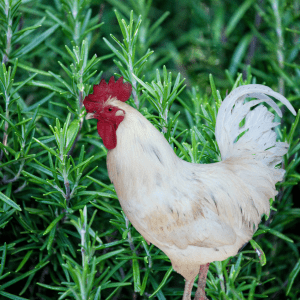
Q: How do you make a Rosemary pest repellent spray?
A: You can make a Rosemary pest repellent spray. Steep a handful of fresh rosemary leaves in boiling water for about 30 minutes. Strain the liquid and pour it into a spray bottle. You can also add a few drops of crucial oils like lavender or peppermint for added pest-repelling power.
Q: Are there any precautions to take when using Rosemary as a pest repellent?
A: While Rosemary is safe for humans and pets, it’s always a good idea to do a patch test before using any homemade repellent on your skin or fabrics. Some people may be allergic to Rosemary, so it’s important to take precautions if you have sensitive skin.
Q: How effective is Rosemary as a pest repellent?
A: Rosemary is a natural and environmentally-friendly way to repel pests. But, its effectiveness may vary depending on the type of pest and the concentration of Rosemary used. It works best as a preventive measure or in combination with other pest control methods for maximum efficacy.

